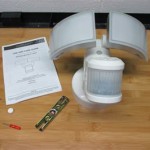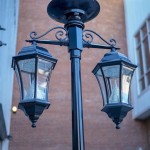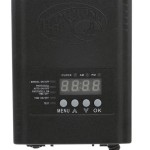Running Wire for Outdoor Lamp Post: A Comprehensive Guide
Installing an outdoor lamp post not only enhances the aesthetics of your outdoor space but also provides essential illumination. Running the necessary wires for the lamp post is a crucial step in the installation process that requires careful planning and execution. Here is a comprehensive guide to help you safely and effectively run wire for an outdoor lamp post:
1. Determine the Wire and Cable Requirements:
The first step is to determine the appropriate wire size and cable type for your lamp post installation. Factors to consider include the distance from the power source to the lamp post, the wattage of the lamp, and any voltage drop constraints.
2. Choose the Conduit and Burial Depth:
Buried conduit protects the wires from damage and moisture. Choose a conduit made of PVC or metal that is suitable for outdoor use. The burial depth should comply with local codes and regulations, typically ranging from 18 to 24 inches deep.
3. Trenching and Laying the Conduit:
Excavate a trench from the power source to the lamp post location. Place the conduit in the trench and secure it using stakes or straps. Ensure the conduit has proper drainage and slopes away from the power source to prevent water accumulation.
4. Pulling the Wires Through the Conduit:
Use a fish tape or wire puller to pull the wires through the conduit. It is recommended to use THHN or XHHW type wires, which are designed for outdoor use and direct burial. Leave enough excess wire at both ends for connections.
5. Connecting the Wires:
At the power source, connect the wires to the appropriate circuit breaker or fuse using wire nuts or a junction box. At the lamp post, connect the wires to the fixture according to the manufacturer's instructions. Use waterproof connectors or heat shrink tubing to ensure the connections are weatherproof.
6. Grounding:
Proper grounding is essential to protect against electrical shocks. Connect a grounding wire from the lamp post to the conduit and the power source. Use a grounding rod if the conduit does not provide a suitable grounding path.
7. Backfilling and Safety Measures:
Once the connections are complete, backfill the trench with soil or sand, ensuring the conduit is securely buried. Install a cable marker above the conduit to indicate its location. Always follow proper safety precautions when working with electricity.
Conclusion:
Running wire for an outdoor lamp post requires careful planning and proper execution. By adhering to these steps and following safety protocols, you can ensure a safe and functional installation that enhances the beauty and safety of your outdoor space.

How To Install A Yard Light Post Electrical Projects Home Wiring Lights

Step By Guide In Installing An Outdoor Post Lamp

Outdoor Low Voltage Lighting Diy Family Handyman

How To Install Outdoor Lighting And Diy Family Handyman

Install A Lamp Post

Interior Remodel Diy Electrical Outdoor

Planning Your Low Voltage Outdoor Landscape Lighting 1000bulbs Blog

How To Install A Lamp Post The Home Depot

How To Run Electrical Wiring Outside Family Handyman

How To Install Outdoor Lamp Post Easily Step By Gui
Related Posts







